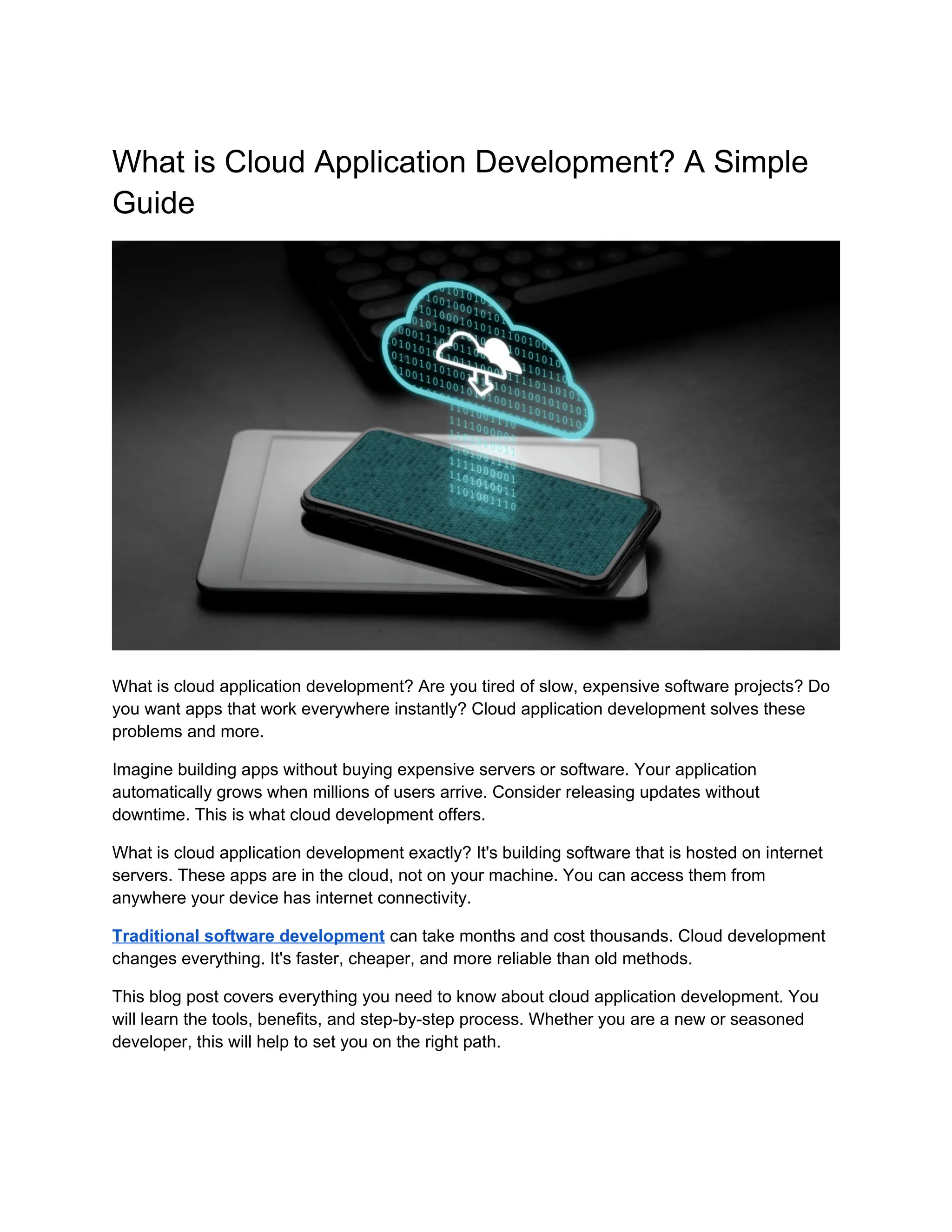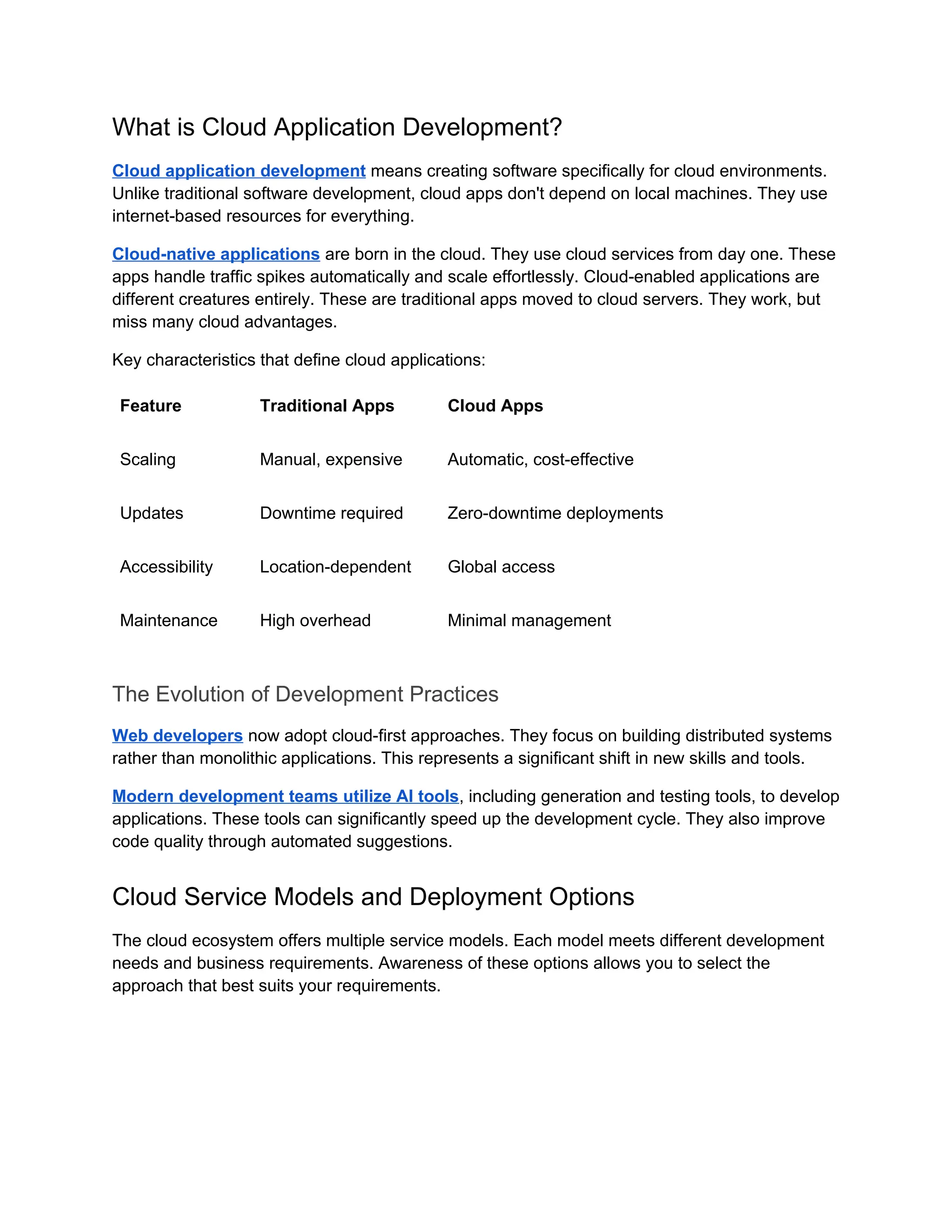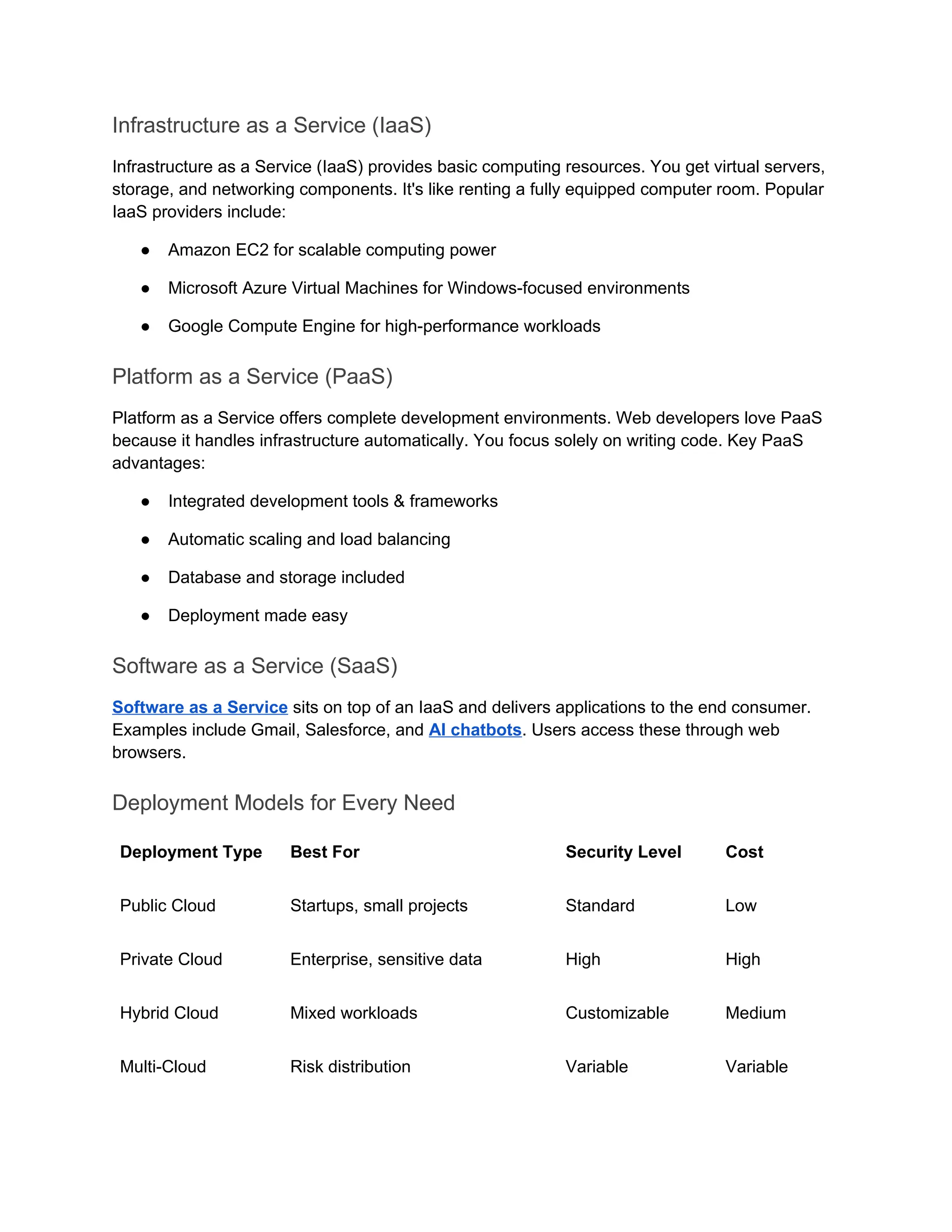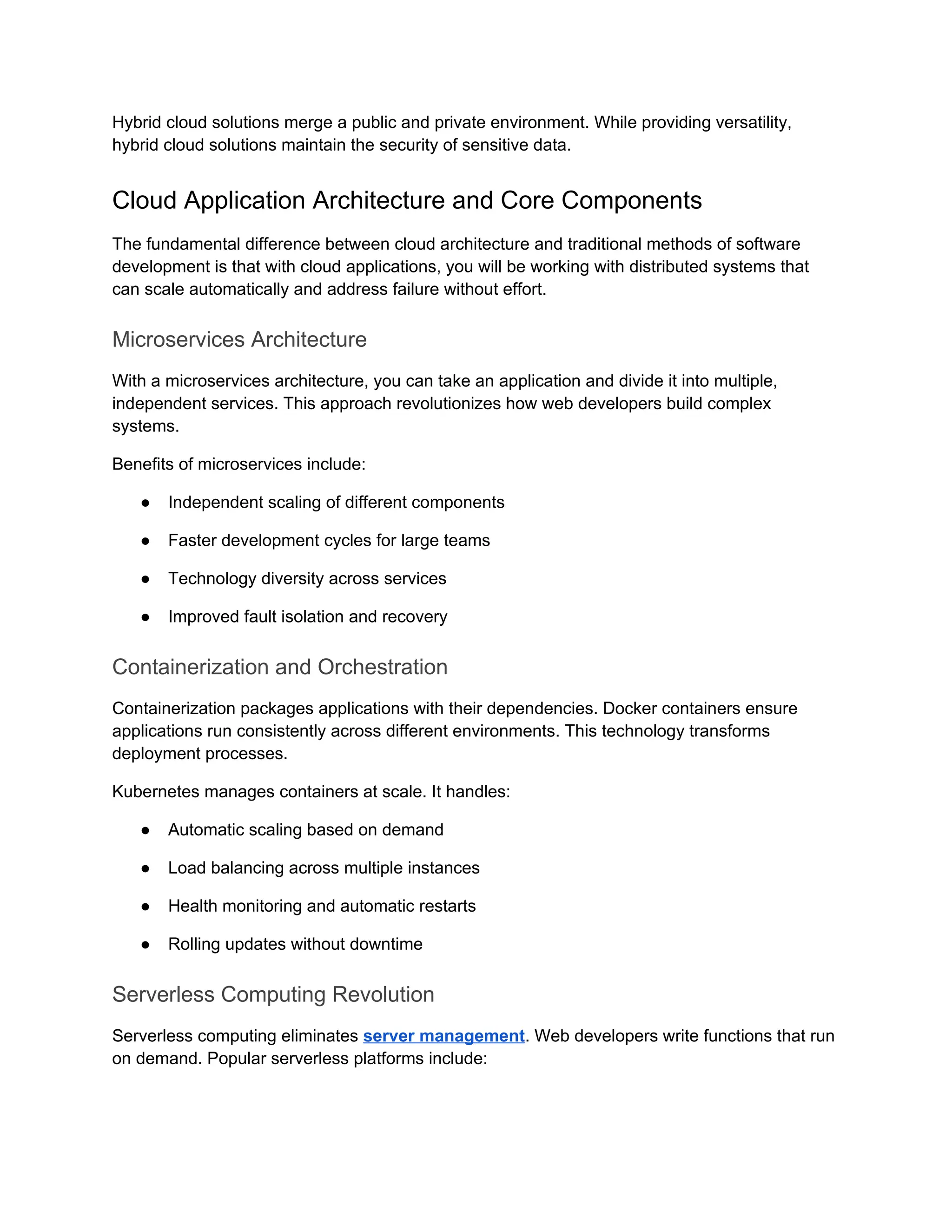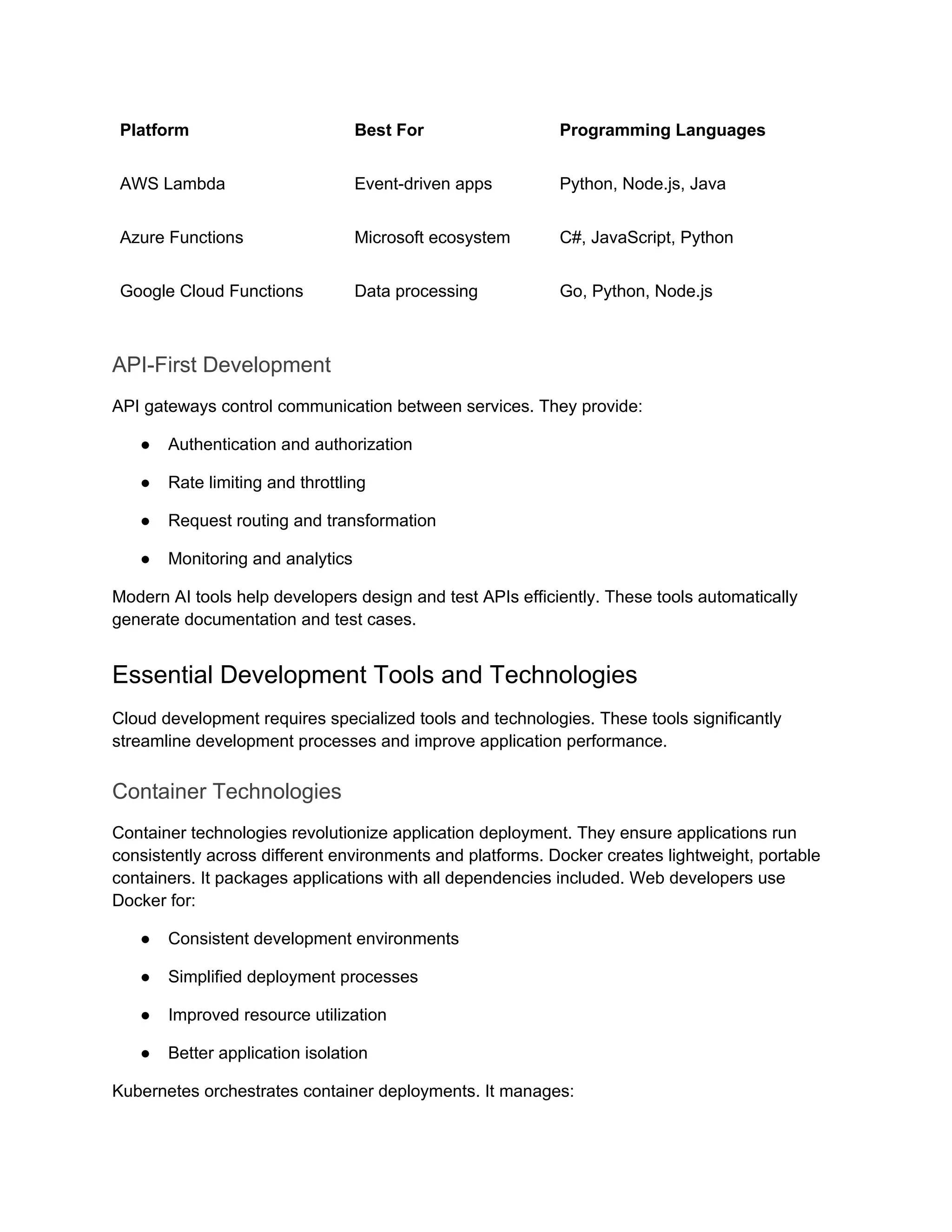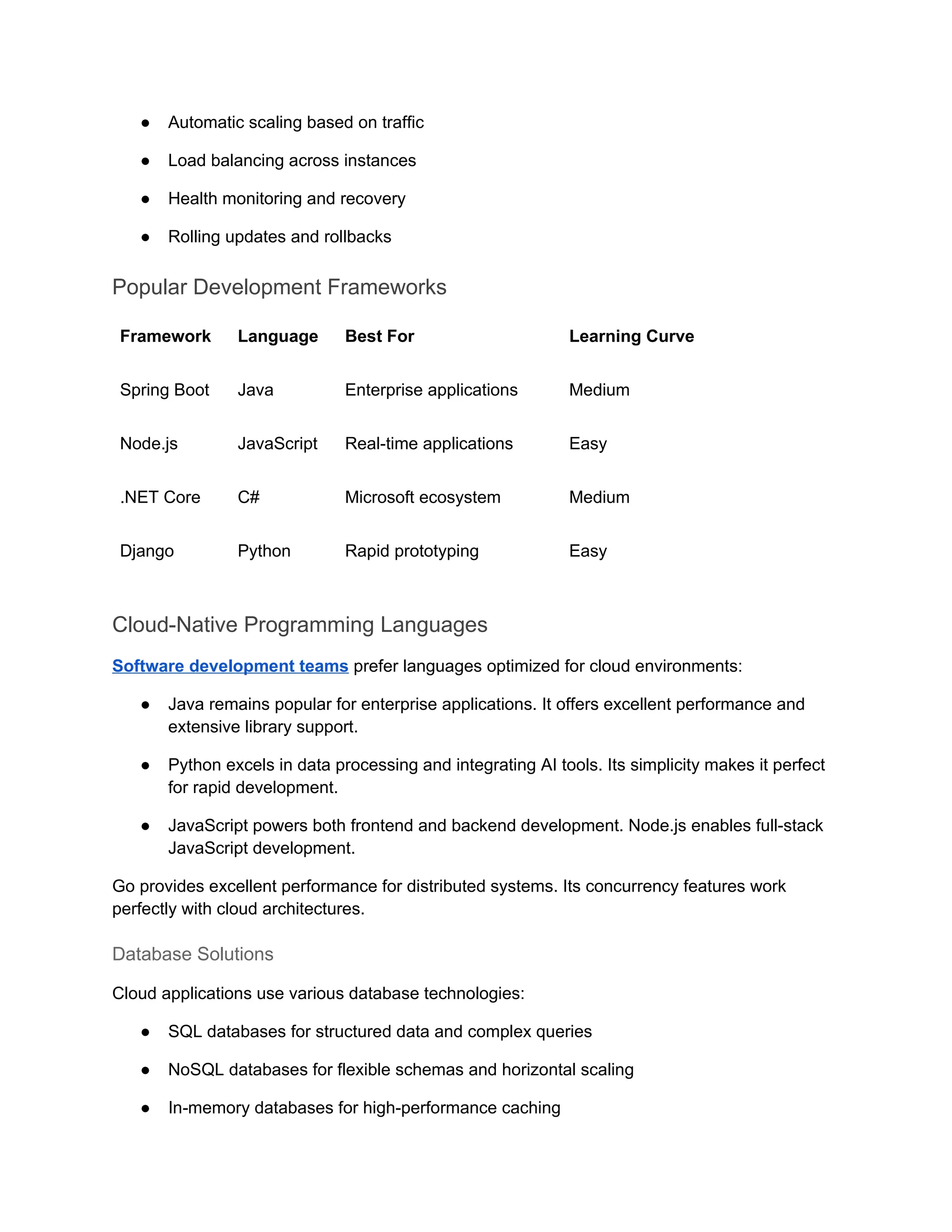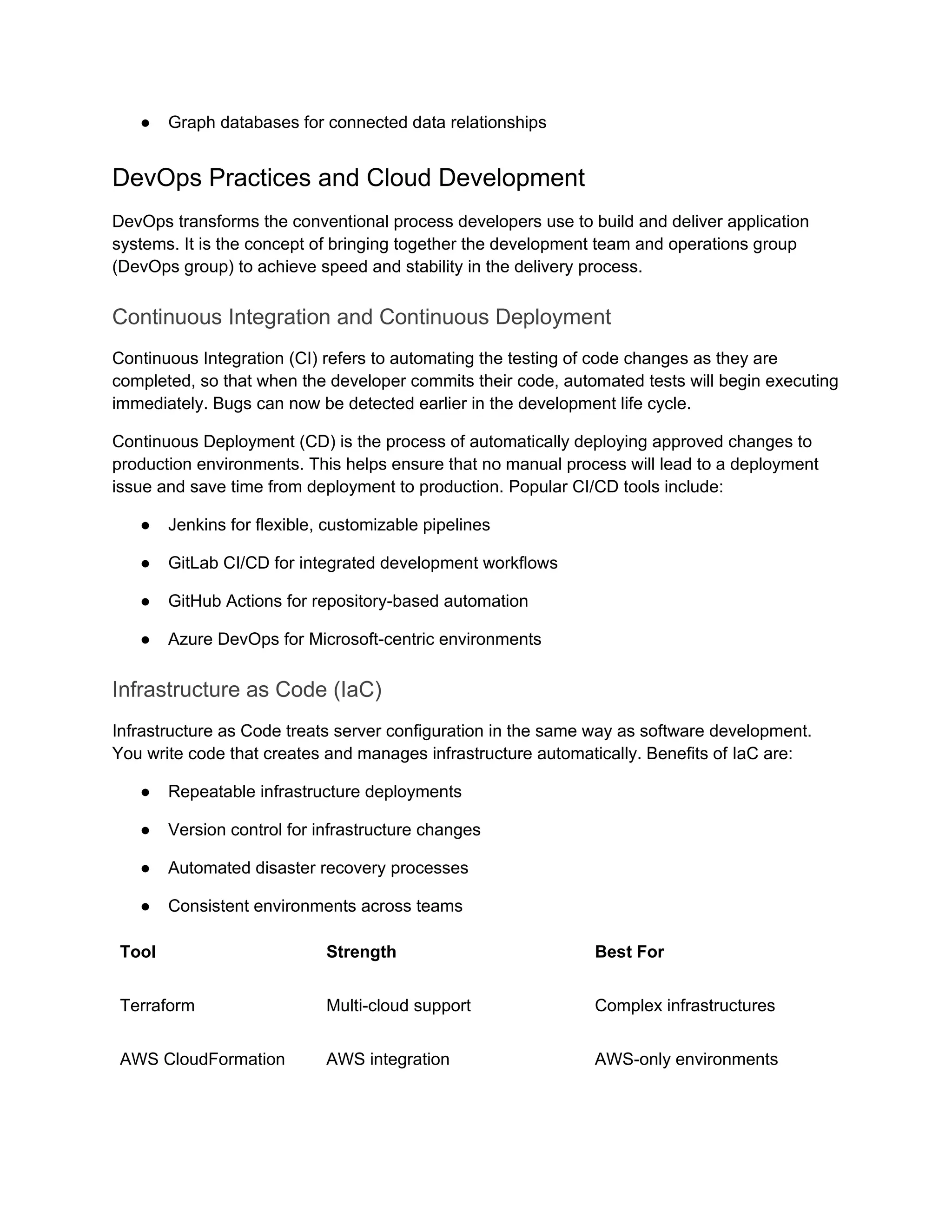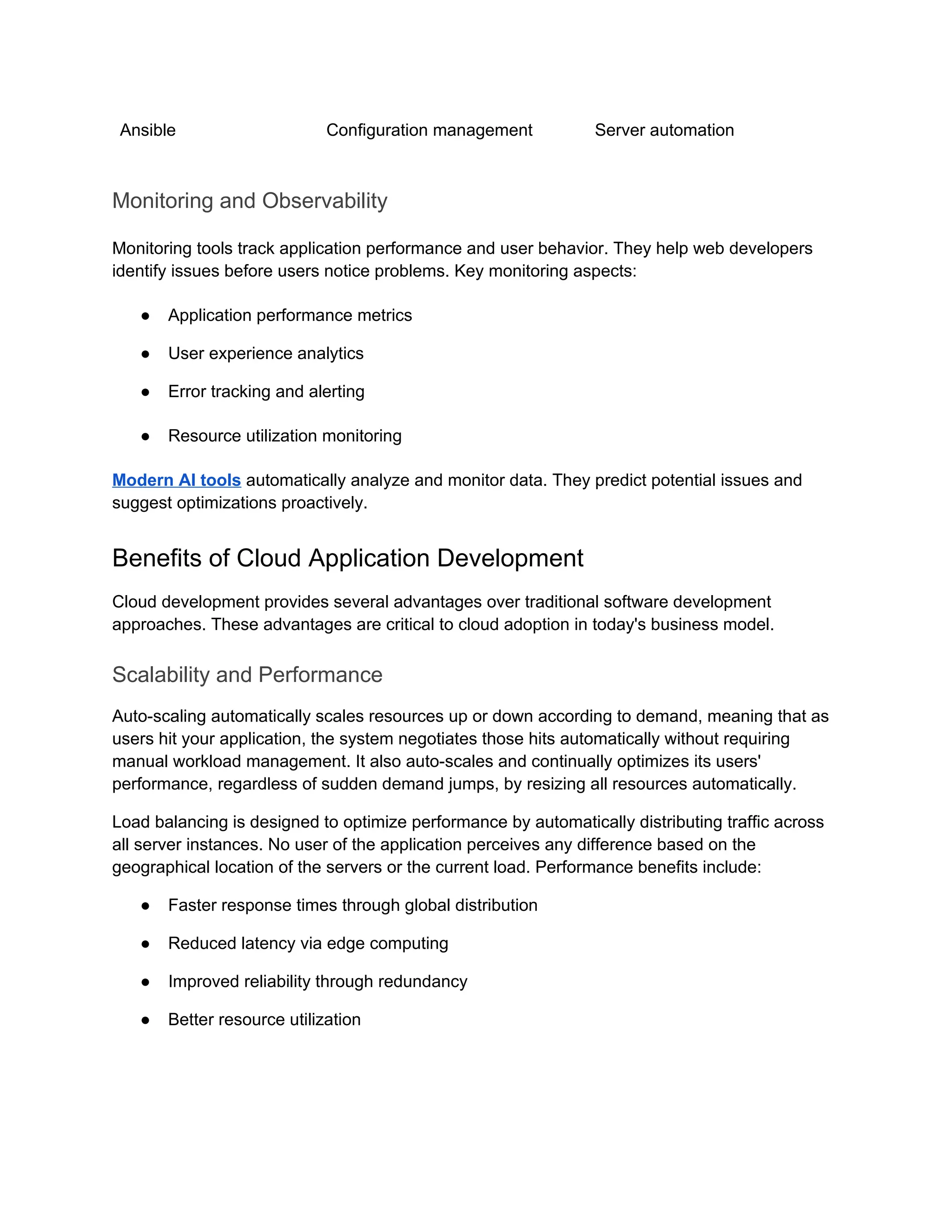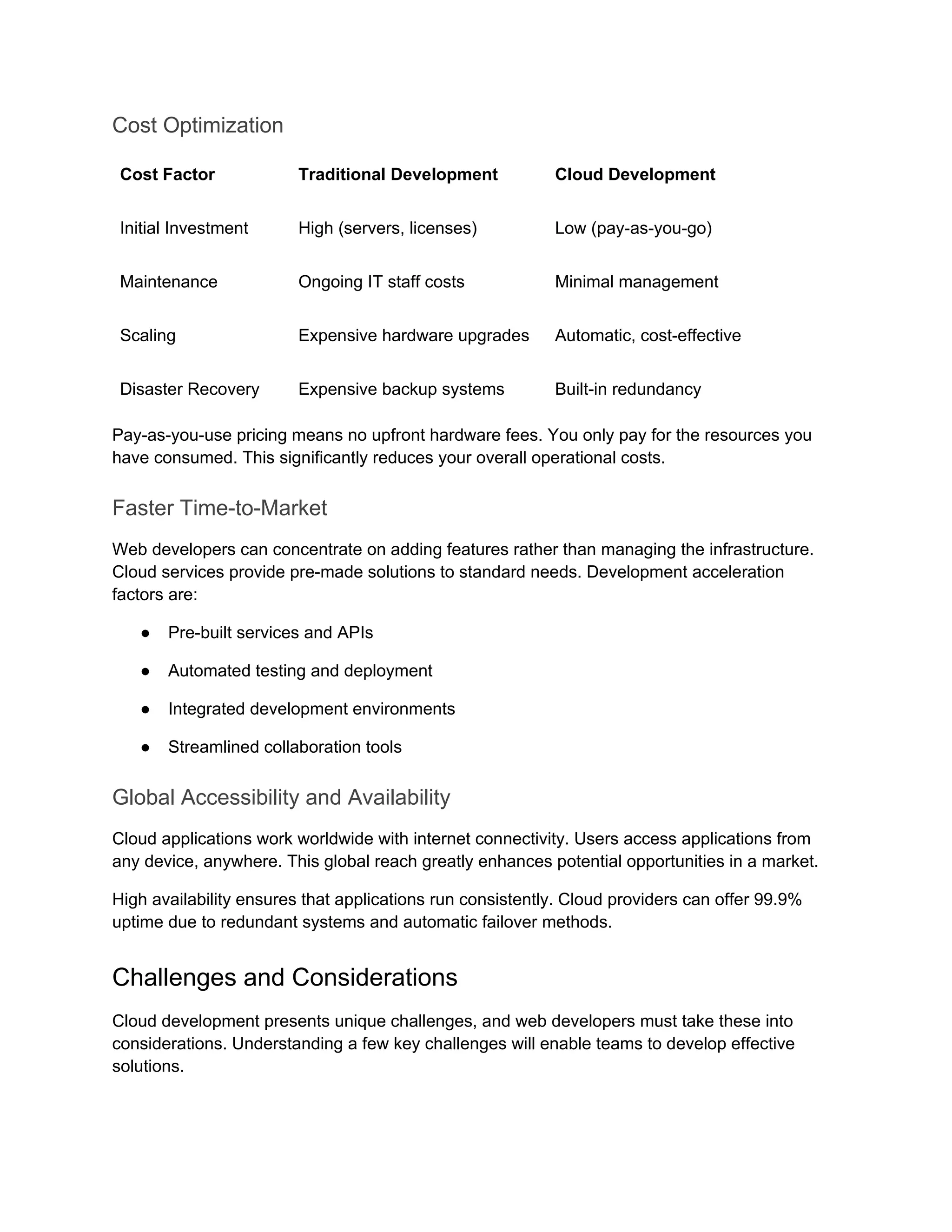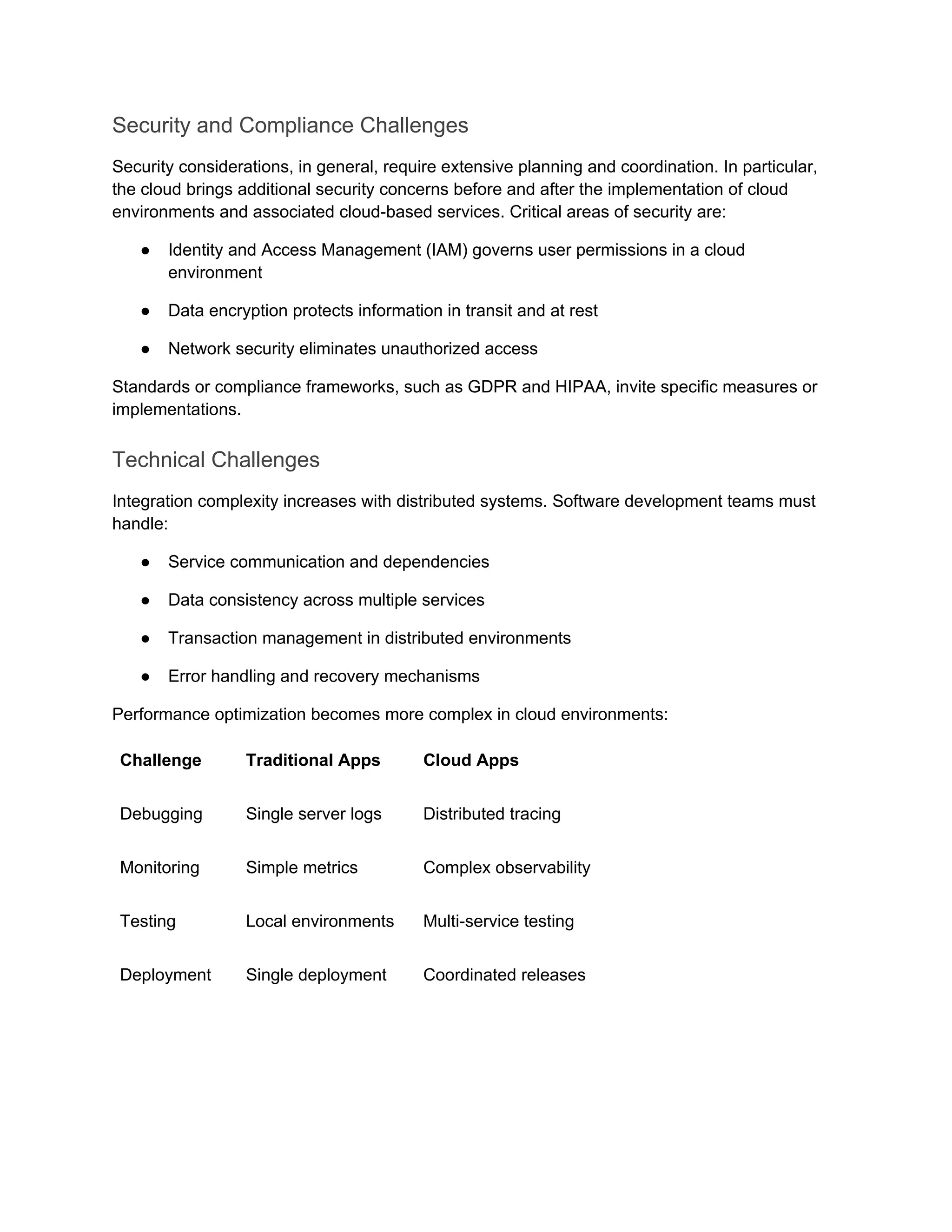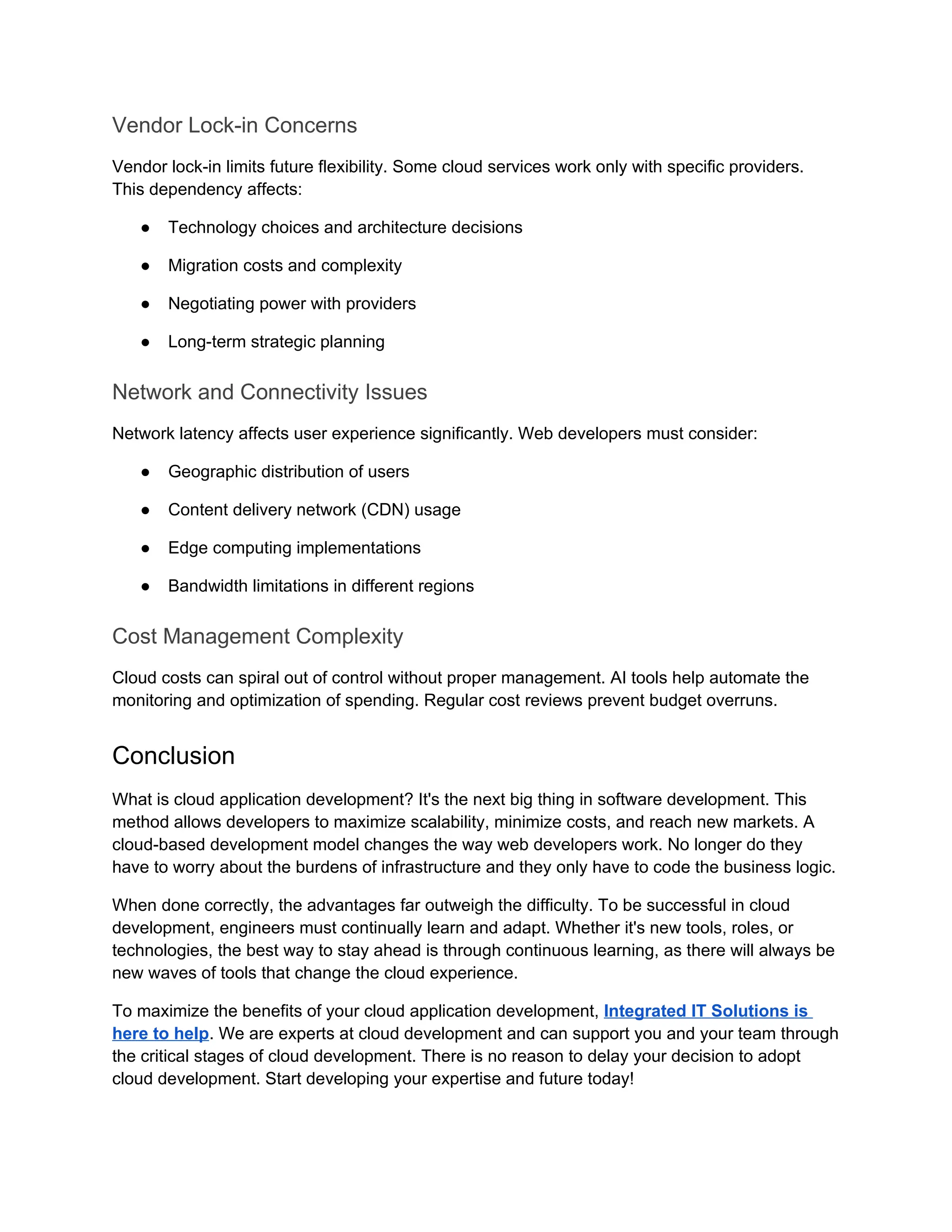In today’s fast-paced digital world, businesses need solutions that are not only powerful but also flexible, scalable, and cost-effective. That’s where cloud application development comes into play. But what exactly is cloud application development, and why is it becoming the go-to strategy for startups and enterprises alike?
Put simply, cloud application development is the process of creating software applications that run on cloud-based platforms instead of traditional on-premise servers. These apps are accessed over the internet and are hosted in cloud environments such as AWS, Microsoft Azure, or Google Cloud Platform. From productivity tools to customer-facing apps and internal dashboards, cloud-based solutions are shaping how businesses operate in a connected world.
One of the biggest benefits of cloud app development is scalability. Unlike traditional software, which requires expensive hardware upgrades to handle increased demand, cloud apps can easily scale up or down based on user needs. This means your application can grow alongside your business—without overextending your IT budget.
Another key advantage is accessibility. Cloud applications can be accessed anytime, anywhere, from any device with an internet connection. Whether your team is working remotely, on the road, or across time zones, a cloud-based application ensures seamless collaboration and real-time updates.
Security and data protection are also critical features of cloud-based solutions. Leading cloud platforms invest heavily in advanced encryption, firewalls, and compliance frameworks to ensure your sensitive data stays safe. Plus, regular backups and disaster recovery tools minimize the risk of data loss or service disruption.
When it comes to development speed and cost, cloud platforms offer pre-built tools, frameworks, and APIs that reduce coding time and streamline deployment. Developers can build, test, and launch applications faster using cloud-native services and continuous integration/continuous deployment (CI/CD) practices. This helps businesses bring their products to market quickly while staying agile in an ever-changing landscape.
Cloud application development supports a wide range of use cases—from building mobile apps that sync in real time, to creating enterprise-level software that integrates with multiple services. Whether you’re a small business owner wanting to improve customer experience or a large organization looking to digitize operations, cloud solutions provide the tools to make it happen efficiently.
Getting started with cloud development doesn’t mean you have to be a tech expert. Today, many software development companies offer custom cloud solutions tailored to your unique business goals. They’ll guide you through everything from choosing the right cloud platform to designing, developing, and launching your application.
In conclusion, cloud application development is transforming the way businesses build and use software.
